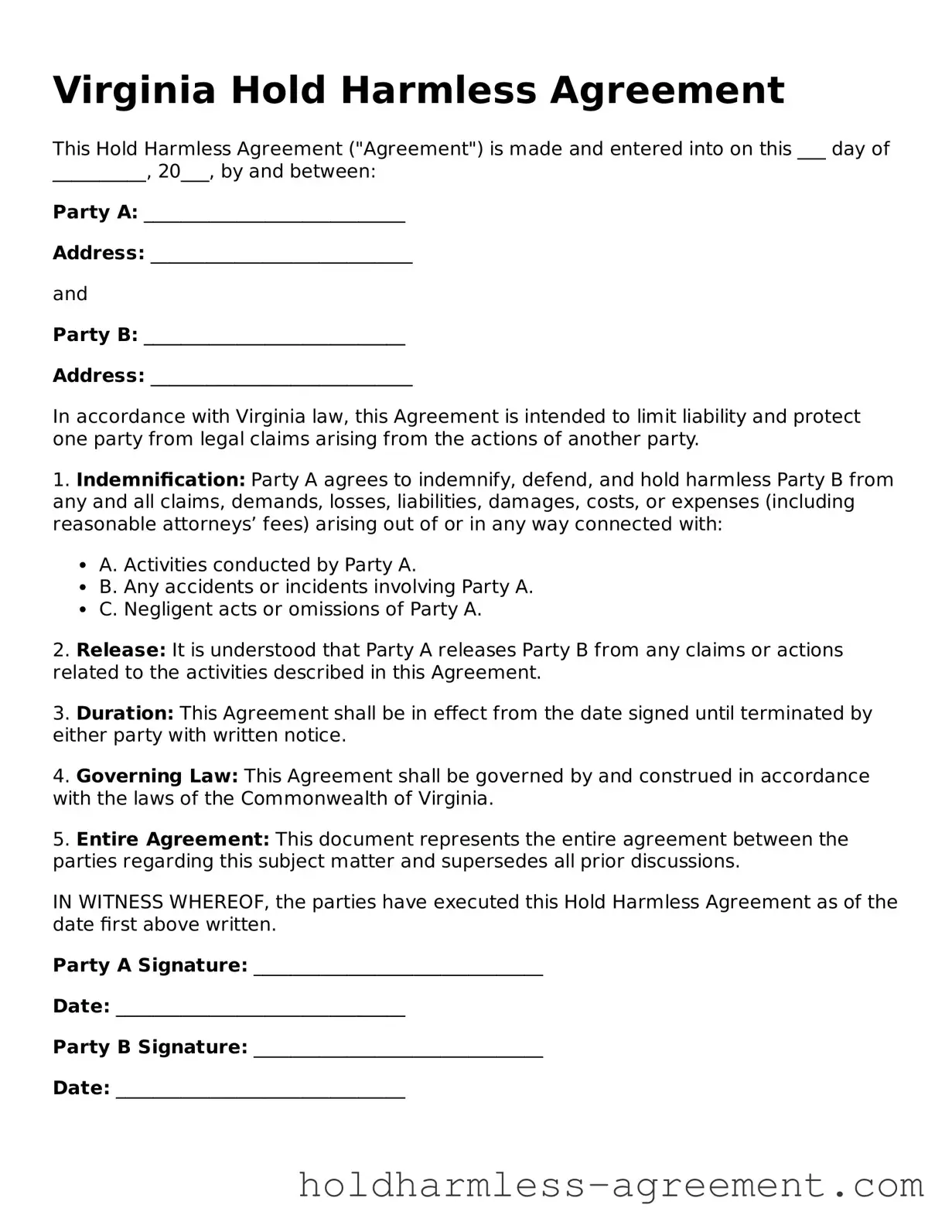Filling out a Virginia Hold Harmless Agreement can be straightforward, but many individuals make mistakes that can lead to complications. One common error is failing to read the entire document before signing. This oversight can result in misunderstandings about the terms and conditions of the agreement. It is essential to understand what you are agreeing to, as this document often releases one party from liability.
Another mistake is not providing complete information. Incomplete forms can lead to delays or even rejection of the agreement. Each section of the form should be filled out carefully, ensuring that all necessary details are included. This includes names, addresses, and specific activities or events covered by the agreement.
People often overlook the importance of clarity in the language used. Using vague terms can create confusion about the scope of the agreement. It is better to be specific about what liabilities are being waived. Clear language helps all parties understand their rights and responsibilities.
Additionally, some individuals forget to date the agreement. A missing date can lead to questions about when the agreement was made. This detail is crucial for establishing the timeline of liability and protection under the agreement.
Another common mistake is neglecting to have witnesses or notarization when required. Some agreements may need to be signed in the presence of a witness or a notary public to be legally binding. Skipping this step can render the agreement invalid.
People also sometimes fail to keep a copy of the signed agreement. Having a personal copy is important for reference and proof of the terms agreed upon. Without it, you may find yourself in a difficult situation if disputes arise later.
Lastly, individuals often do not consult with a legal professional before signing. While the form may seem simple, legal advice can provide valuable insights into potential risks and liabilities. Consulting with an attorney can ensure that you fully understand the implications of the agreement.
